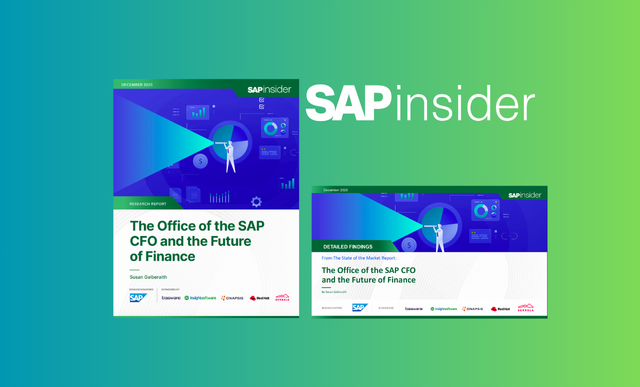What factors are complicating the decision to move to S/4HANA?
Many have talked about S/4HANA adoption by SAP customers that are still running on ECC6. SAP, consultancies, and IT service providers’ messaging has been focused on moving to S/4 and its benefits, and on building the business case for it. Although the messaging may vary, several common themes run through it, which are listed below:
- SAP customers need to migrate to S/4 before the SAP deadline of December 31, 2027. The message here is, “2027 is coming! Will you be ready?”
- SAP customers who do not migrate to S/4 will be at a disadvantage compared to their competition. In some cases, the message is that migration alone is not sufficient. Full digital transformation is required to remain competitive.
SAP and its partners have been working hard to make their case for existing SAP customers to adopt S/4HANA, but recent surveys indicate that customers are not responding as quickly as desired.
These findings indicate that looming deadlines or ominous warnings are not resonating with the SAP customer base. This is echoed by SAPinsider’s Benchmark Report which identified several factors leading to customer resistance like complexity of change and cost. The latter is not surprising as large enterprise projects are always a tough sell financially especially with the talk of recession in the air. Beyond these quantifiable survey results, here are a few examples of factors within organizations that further complicate the decision to move to S/4HANA.
In some ways, SAP is a victim of its own success. Despite the well-known technical and functional improvements within S/4HANA, the fact remains that ECC6 still works rather well. Many existing ECC6 systems have been running for 10 years or more and have been moderately to heavily customized to meet customer business requirements. These customizations and resulting processes have become ingrained within the organizations that use them. What SAP, consultants, or IT organizations may see as unnecessary complexity is comfortable to the businesspeople who use these systems every day to do their jobs. The technical challenges of addressing this customization puts it at the top of the list of objections in the SAPinsider Benchmark Report, without taking into the account the organizational change management required to direct business users away from known customizations and toward a more standardized solution. Despite warnings that those who fail to transform will fall behind, there are many successful organizations that continue to achieve profitable business results on their customized ECC6 systems.
- Business disruption is costly.
S/4 comes with the best tools that SAP has ever provided for customers. But whether the scope of an S/4 project is technical migration or a new greenfield implementation, SAP projects will result in some level of disruption to the business. Customers and implementation partners do everything possible to minimize downtime associated with cutover and may build inventory levels in advance of go-live to protect against stockouts. Despite an organization’s best efforts in planning for and mitigating this risk, it is not possible to predict every technical issue that may arise during cutover. Organizations are justifiably cautious of enterprise projects that may result in unexpected downtime, production or shipping delays, and resulting damage to customer relationships.
- SAP projects are exhausting.
Even with the best tools, technology, and a top-notch implementation partner, there is no such thing as a simple SAP project. Regardless of scope, all changes require thorough testing, documentation, and training to be successful. Adding business process improvement into the mix requires additional time and effort, and the resulting burden often falls disproportionately upon employees who are pulled into the project because of their business knowledge. These team members may still be responsible for their primary jobs, which leads to prolonged overtime to achieve project goals while keeping the business running. Adhering to schedules often result in reduced vacation time and working through holidays. Many organizations offer bonuses or other incentives to employees to compensate them for these project hardships, but the additional rewards are often not fully adequate to overcome the inevitable organizational fatigue that accompanies major enterprise projects.
As Dr. Michael Hammer emphasized, “The soft stuff is the hard stuff.” Some of this may seem like sales 101, but it is really about getting to know the customer, asking the right questions, and understanding the feelings and emotions that go into a decision of this magnitude. Budgets and ROI will never cease to be critical factors, but successful business cases will look beyond the numbers and address the “soft” concerns that may be preventing customers from moving forward with an S/4 project.
The following list represents a few examples of how some common organizational challenges may be addressed.
- Suggest solutions to known pain points.
No matter how well an existing ECC6 system may be performing, most SAP customers have existing challenges that they would like to see addressed. Many such challenges have been addressed through customization over the lifespan of the ECC6 system, but there are some pain points that have been difficult to resolve. New solutions in S/4HANA may address these remaining pain points in a standardized manner. For example:
- A multinational company with complex intercompany relationships may find a better solution in S/4 HANA Advanced Intercompany Sales.
- Embedded EWM within S/4HANA may allow a customer to meet warehousing requirements beyond the scope of traditional SAP WM while avoiding the complexity of a decentralized EWM system.
Whatever the challenge may be, matching standardized solutions to existing business requirements can help build a much more persuasive business case.
- Recommend project scope that aligns with the customer’s appetite for change.
Many customers can benefit from full business process reengineering. Greenfield S/4HANA implementation is the ideal opportunity to start. But successfully doing so requires an appetite for change that doesn’t exist within every organization. Apart from the additional time, effort, and budget required for a greenfield approach, the customer may have existing processes within their ECC6 system that are fully meeting business requirements, and the aforementioned customization which has become fully socialized throughout the organization. A technical migration to S/4 may be all that is needed or desired, and a successful business case will be aligned accordingly.
- Propose challenging but achievable project schedules.
All projects come with schedules and budgets and business process reengineering must be done rapidly. The implementation partner selection process is competitive, and there is a natural tendency to quote the most aggressive possible timeline in order to win the business. But the need to complete a project quickly and efficiently must be balanced with the human toll that an unduly aggressive schedule can take upon employees. Improved tools and methodologies have progressively shortened required project timelines, but even a project timeline of six to nine months can seem like an eternity to team members. There are no easy answers on this one, but both team members and project quality suffer if the project schedule becomes more challenging than the team can bear.
S/4HANA represents the next generation of SAP, providing capabilities and opportunities far beyond what can be achieved in ECC6. This will likely become clearer over time, but the S/4 decision will continue to be a challenging topic within SAP customer organizations. All projects must overcome the usual financial hurdles, but truly successful S/4 business cases will also address the human concerns inherent to all organizations.






